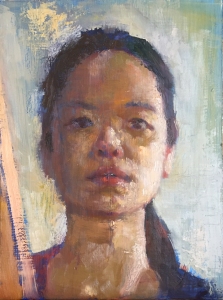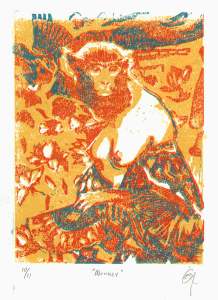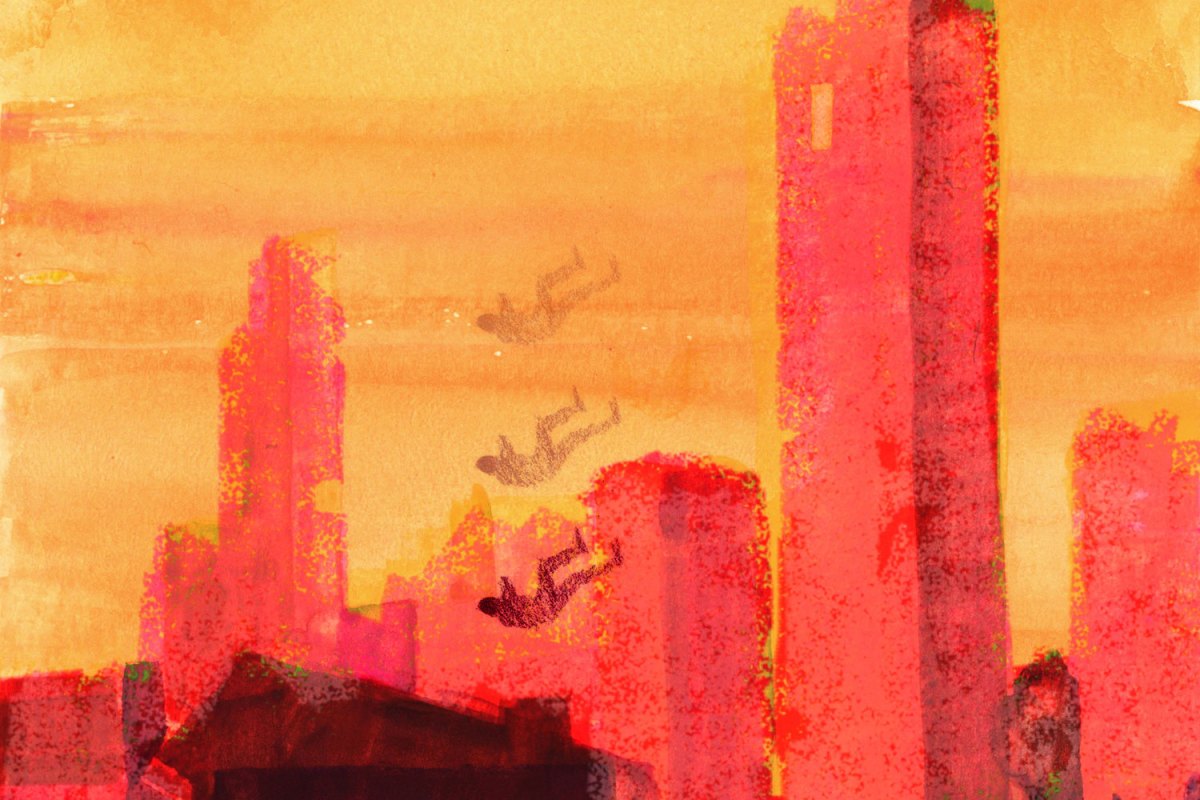This article was published by PETRIe Inventory at http://www.petrieinventory.com/introducing-jia-sung
***
Jia Sung is a Brooklyn based visual artist, whose works are simultaneously enchanting and startling, as they seem to refer to a fragile, yet potent, materiality. Sung´s illustrations are semiotic wonders, fragments of thoughts and imagined worlds, a spectacular multitude of meaning. With an acute awareness of herself, her origins and her journey, she explores notions of identity and language, cultural dislocation and belonging, often turning her artworks into pertinent social and cultural commentary.
Referring to herself, Sung writes: “Jia Sung is a painter and illustrator. In her spare time, she is a monkey.” Naturally, we had to hear more.
Elena Stanciu: Tell me a little about yourself and your practice. When did you start painting? Who and what inspires you? Are you really a monkey in your spare time?
JS: I always liked drawing, but gained the confidence to explore different mediums and adapt them to my own needs in art school. I’m constantly raiding the world around and inside me for moments and images I would like to record. Literature and language especially inform my approach to image making. And yes! I have a big head, long arms, a love of bananas and mangos, and am an avid tool user. My goal in the future is to be a full-time monkey.
ES: I can see you work with notions of identity and belonging, particularly in a postcolonial, cross-cultural framework. What inspires this predilection?
JS: I grew up in Singapore, a postcolonial society, but didn’t know what it meant to me, or how to position myself in relation to that. I am a Chinese woman who forgets her mother tongue, an American citizen with no roots besides my passport. Identity and memory, like the body, are never shed until you die. Pursuing an understanding of historical and social context is a way for me to forge meaning from my experiences, and make sense of the world around and within me.

ES: I particularly like your Play on Words series, where you illustrate your favourite words. What prompted this series? Are your illustrations meant to explain, ease understanding of the word, or rather to complicate and obscure it, thus preserving its beauty?
JS: The drawings are a space to play, for the parts of my vocabulary and self I don’t get to bring into everyday use. So I think they both reveal and obscure something about language, and about me.
ES: The human body is central to many of your works – sometimes disrupted, deformed or in various hybrid forms. Tell me a little about this. How do you refer to this extremely potent visual trope?
JS: I am constantly surrounded by bodies, and, as an inhabitant of one, it feels natural and familiar to speak on and with the body. Returning to the question of skin and surface in my work is a way for me to think through my questions about the smudgy, shifting distinction between mind and matter, how arbitrary it sometimes feels. The idea that it’s not as simple or neat as the “container/contained” dichotomy is seen a lot in art that engages issues of feminism, marginalisation, colonialism, police violence, and so on. I think this happens because we so often experience violence and aggression through the body. The body is my only signifier, my avatar in the world – what you do to my body you do to me, and that symbiotic relationship is a recurring reference point for me in approaching the human body.

ES: I am extremely impressed with Great Monkey Sage Returns Orientalist Gaze. There is a clear critical dimension to it – could you elaborate on your intentions with this piece?
JS: Thank you! The heavy-handed title explains a lot, but my paintings have been compared to Impressionist and Symbolist work, and this piece was made in response to the tradition of Orientalism associated with those movements. The idea was to remix the visual narrative of the passive lotus blossom in Klimt’s Lady with Fan by introducing the folk hero, the Monkey Sage, with breasts naked and eyes forward. I like monkeys in the same way I like dogs. There’s a tension between domesticated and feral, latent and learned, that makes them potent and humorous stand-ins for ourselves.
ES: What projects are you currently working on?
JS: I’m making a comic about bathtubs, and hoping to make more time to paint this summer.
Interview by: Elena Stanciu
